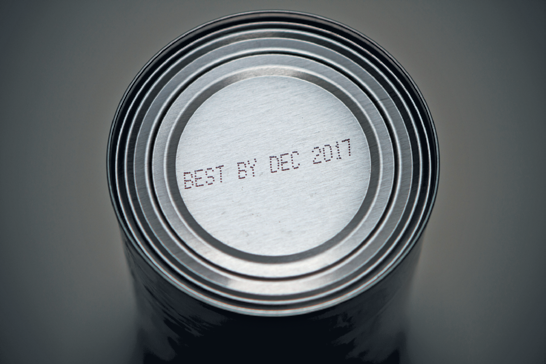A. Judith C. Thalheimer, RDN, LDN, managing editor of Tufts Health & Nutrition Letter, answers: “Those ‘sell by’ and ‘best by’ dates on packages are not actually expiration dates. Food product dating is voluntary and represents the manufacturer’s best guess as to when the product may no longer be at peak quality. Not being at ‘peak quality’ does not mean spoiled or dangerous, however. Most food is good long after those dates have passed. The best thing to do is trust your eyes and nose.
Sugar and salt don’t spoil. They may clump or crystallize but salt, sugar, honey, molasses, and syrups will basically last forever. The same is true for vinegars and extracts like vanilla.
Foods containing fat can get rancid. When exposed to light and/or heat, fats can oxidize, resulting in rancid flavors. Keep oils, shortening, or butter in containers that minimize light and air exposure, and store them away from the stove and oven. Eating rancid foods is unlikely to make you ill, but they don’t taste very good. If your oil or other fats smell soapy, metallic or fishy, it’s best to discard them.
Whole grains go bad before refined grains. The germ in whole grains and whole grain products contain natural oils that can go rancid within a few months. The same is true for nuts. White flour and white rice, if kept dry, will last indefinitely (as will instant oats and grits). The health benefits of whole grains and nuts make them worth keeping around, however they will maintain their quality longer if you keep them in the refrigerator or freezer. Sniff nuts, whole grains, and products made from them for that telltale rancid smell before eating.
Canned/jarred goods last well beyond the dates. Unless cans are bulging or rusted and the lids on jars are popped up, the food inside is very likely perfectly safe to eat. Of course, look for signs of mold, unexpected cloudiness, fermentation bubbles, and off odors after opening. Look for these same signs to judge the quality of refrigerated foods as well. Moldy food should be thrown away, as molds can (rarely) produce toxins even in parts of the food that look unaffected to the naked eye. An exception is hard cheese, which is likely fine once the moldy parts are cut off.
Frozen food is (nearly) invincible: If well sealed and kept frozen, the only danger to frozen foods is freezer burn which may affect flavor, appearance, or texture. This occurs when air gets to the food, causing dehydration on the surface and possibly oxidation. If you see ice crystals around the food, it’s still safe to eat, but the texture (and possibly taste) might be not be what you expect.”






















I would like to either pay by PayPal, Venmo, or by a check through the mail.
I will not put my credit card online again.
Please let me know if any of these options will work to subscribe to Tufts Diet and Nutrition newsletter subscription.
Thank you.
Liz Stevens